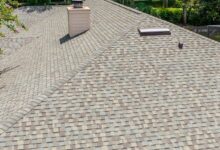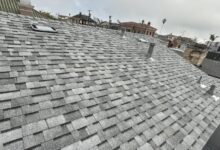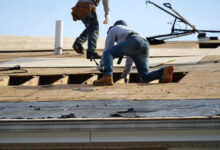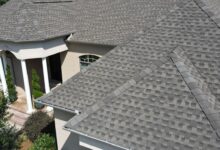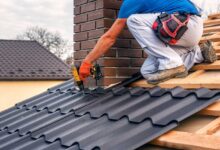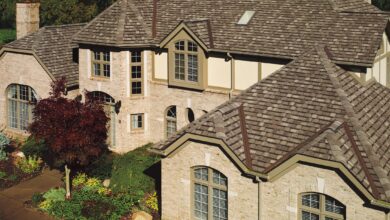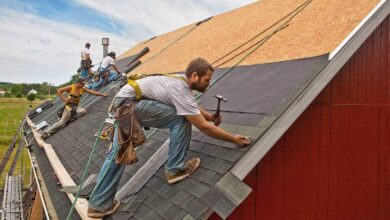Roofing Companies Long Beach: A Comprehensive Guide
Roofing companies Long Beach represent a diverse market catering to a wide range of needs. This guide delves into the intricacies of the Long Beach roofing industry, exploring the services offered, the competitive landscape, and the considerations homeowners should make when selecting a contractor. From understanding the local building codes and permit requirements to navigating the complexities of budgeting and financing, we aim to provide a thorough and informative resource for Long Beach residents undertaking roofing projects. We will examine the most popular roofing materials and installation techniques suitable for the Long Beach climate, ensuring you’re equipped with the knowledge to make informed decisions.
This exploration will cover various aspects, from evaluating bids and choosing reputable companies to understanding the legal and regulatory frameworks governing roofing work in Long Beach. We’ll also offer insights into successful marketing strategies employed by roofing companies in the area, shedding light on what resonates with local homeowners. Ultimately, our goal is to empower Long Beach residents to confidently navigate the process of selecting and working with a roofing contractor.
Understanding the Long Beach Roofing Market
Long Beach, California, boasts a substantial and dynamic roofing market driven by its coastal climate, aging housing stock, and consistent new construction. The market’s size and complexity are influenced by factors such as weather patterns (including strong winds and occasional heavy rain), the prevalence of specific roofing materials (like tile and asphalt shingles), and the diverse range of architectural styles found throughout the city.
The size of the Long Beach roofing market is difficult to quantify precisely without access to proprietary market research data. However, considering the city’s population, housing density, and the average lifespan of roofs, it’s safe to assume a significant annual demand for roofing services, encompassing both residential and commercial sectors. This demand fuels a competitive market with numerous companies vying for a share.
Types of Roofing Services in Demand
The Long Beach roofing market caters to a broad spectrum of service needs. High demand exists for routine maintenance, including inspections, cleaning, and minor repairs. Significant portions of the market are dedicated to roof replacements, driven by age and damage from weather. Re-roofing projects often involve the removal of existing materials and installation of new roofing systems. Further, specialized services like leak detection and repair, emergency roof repair (following storms or accidents), and the installation of specific roofing types (such as tile roofs common in Spanish-style homes) represent significant market segments. Finally, the growing emphasis on energy efficiency is driving demand for the installation of cool roofs and other energy-saving roofing solutions.
Competitive Landscape of Long Beach Roofing Companies
The Long Beach roofing market is highly competitive, with numerous established and emerging companies. This competition manifests in varying pricing strategies, service offerings, and marketing approaches. Success often depends on factors like reputation, customer service, warranty offerings, and the ability to handle a diverse range of projects efficiently. Below is a comparison of four hypothetical Long Beach roofing companies (note: this data is for illustrative purposes and does not represent actual companies):
| Company Name | Services Offered | Customer Reviews (Example) | Price Range (per square) |
|---|---|---|---|
| Coastal Roofing Solutions | Roof Repair, Replacement, Maintenance, Tile Installation | 4.8 stars (Google Reviews), “Professional and efficient!” | $800 – $1500 |
| Long Beach Roofers | Roof Repair, Replacement, Emergency Services, Leak Detection | 4.5 stars (Yelp), “Great communication and quality work.” | $750 – $1200 |
| Sun Coast Roofing | Residential & Commercial Roofing, New Construction, Warranty Options | 4.2 stars (Angie’s List), “Affordable and reliable.” | $650 – $1000 |
| Pacific Roofing Experts | Roof Inspections, Maintenance, Asphalt Shingle Installation, Flat Roof Repair | 4.7 stars (Facebook Reviews), “Excellent customer service!” | $700 – $1400 |
Customer Needs and Preferences
Understanding the specific needs and preferences of Long Beach homeowners is crucial for successful roofing businesses. Long Beach’s diverse housing stock, ranging from Craftsman bungalows to modern high-rises, means that roofing needs vary considerably, influencing both the type of services required and the marketing approaches that resonate.
Long Beach homeowners needing roof repairs or replacements typically exhibit certain characteristics. Many are older homeowners in established neighborhoods concerned with maintaining property value. A significant portion are also renters whose landlords are responsible for roof maintenance, leading to a different set of communication and project management needs. Younger homeowners, while less frequent in need of major repairs, often prioritize eco-friendly and energy-efficient roofing options. Finally, the coastal location necessitates a focus on roofs that can withstand harsh weather conditions, including salt spray and strong winds.
Common Homeowner Concerns Regarding Roofing Projects
Long Beach homeowners share several common concerns regarding roofing projects. Cost is a primary concern, especially given the significant investment involved in roof repairs or replacements. Homeowners often worry about the disruption to their daily lives during the project, including noise, access to their property, and the overall project timeline. The quality of materials and workmanship are also paramount, with homeowners seeking assurance of a long-lasting, durable roof. Finally, the selection process itself can be daunting, with homeowners often unsure of the best materials, contractors, and financing options.
Successful Roofing Marketing Strategies in Long Beach
Effective marketing strategies for roofing companies in Long Beach must address the specific concerns of homeowners. One successful approach involves emphasizing transparency and clear communication regarding project costs, timelines, and the materials used. Providing detailed, upfront quotes and clearly outlining the warranty offered can build trust and alleviate concerns about hidden costs. Another effective strategy is highlighting the experience and qualifications of the roofing crew, showcasing successful past projects and testimonials from satisfied Long Beach homeowners. Finally, focusing marketing efforts on local community involvement, sponsoring local events, or partnering with community organizations can foster a strong sense of local connection and build brand loyalty within the Long Beach community. For example, a local roofing company might sponsor a Little League team or participate in a neighborhood cleanup event, reinforcing their commitment to the Long Beach community and building positive relationships with potential clients.
Roofing Materials and Techniques
Choosing the right roofing materials and installation techniques is crucial for ensuring the longevity and performance of your Long Beach home’s roof. Long Beach’s climate, characterized by mild winters and warm, dry summers with occasional periods of high winds, necessitates careful consideration of material durability and resistance to various weather conditions. Furthermore, adherence to local building codes is paramount.
The selection process involves understanding the properties of different roofing materials and how their performance aligns with Long Beach’s specific environmental challenges. Proper installation techniques are equally important, as improper installation can compromise the roof’s structural integrity and lifespan, regardless of the material used. This section details the most common roofing materials in Long Beach, explores installation methods, and compares their lifespans and maintenance requirements.
Popular Roofing Materials in Long Beach
Long Beach homeowners have a variety of roofing materials to choose from, each offering unique advantages and disadvantages. The most prevalent options reflect the region’s climate and building codes, prioritizing durability and resistance to the elements. Factors such as cost, aesthetic preferences, and environmental impact also play significant roles in material selection.
- Asphalt Shingles: The most common choice due to their affordability and ease of installation. Asphalt shingles are available in various styles and colors, offering flexibility in design. Their relatively short lifespan necessitates periodic maintenance and replacement.
- Tile Roofing (Clay and Concrete): Highly durable and resistant to fire and high winds, making them suitable for Long Beach’s climate. Tile roofs are aesthetically pleasing and offer excellent longevity, though they are generally more expensive than asphalt shingles.
- Metal Roofing (Aluminum, Steel, Copper): Known for their exceptional durability, longevity, and resistance to extreme weather conditions. Metal roofs are energy-efficient and require minimal maintenance. However, they are typically more expensive upfront.
Roofing Installation Techniques
The success of any roofing project hinges on proper installation techniques. Different roofing materials require specific installation methods to ensure optimal performance and longevity. Choosing a qualified and experienced roofing contractor is essential to guarantee the correct procedures are followed.
- Asphalt Shingle Installation: This involves preparing the roof deck, applying underlayment, and carefully installing shingles according to manufacturer’s specifications, ensuring proper overlapping and nailing.
- Tile Roofing Installation: Tile installation requires precise measurements and careful placement to ensure proper interlocking and water shedding. This often involves specialized tools and techniques.
- Metal Roofing Installation: Metal roofs are typically installed using interlocking panels, requiring precise cuts and fastening to ensure a watertight seal. Specialized tools and expertise are crucial for this type of installation.
Lifespan and Maintenance Requirements of Roofing Materials
Understanding the lifespan and maintenance requirements of various roofing materials is crucial for effective budget planning and long-term home maintenance. Regular inspections and timely maintenance can significantly extend the life of your roof and prevent costly repairs.
- Asphalt Shingles: Lifespan: 15-30 years; Maintenance: Regular inspections for damaged or missing shingles, cleaning debris, and occasional resealing.
- Tile Roofing (Clay and Concrete): Lifespan: 50-100 years; Maintenance: Periodic inspections for cracked or broken tiles, cleaning debris, and occasional repointing of mortar.
- Metal Roofing (Aluminum, Steel, Copper): Lifespan: 50-75 years (or even longer for copper); Maintenance: Relatively low maintenance, primarily involving occasional cleaning and inspection for signs of corrosion or damage.
Finding and Evaluating Roofing Companies
Choosing the right roofing contractor in Long Beach is crucial for a successful and long-lasting roof. Navigating the numerous companies available requires a systematic approach to ensure you find a reputable and qualified professional. This section provides a step-by-step guide to help Long Beach homeowners make informed decisions.
Finding Reputable Roofing Companies in Long Beach
Finding qualified roofing contractors in Long Beach involves several key steps. Begin by leveraging readily available resources to identify potential candidates. This initial screening helps narrow down the field and saves valuable time.
- Online Search Engines: Utilize search engines like Google, Bing, or DuckDuckGo, searching for “roofing contractors Long Beach” or “roof repair Long Beach.” Review search results, paying close attention to company websites, online reviews, and ratings.
- Online Directories: Explore online directories such as Yelp, Angie’s List, and HomeAdvisor. These platforms often feature customer reviews and ratings, providing valuable insights into a company’s reputation and service quality.
- Referrals: Ask friends, family, neighbors, or colleagues for recommendations. Personal referrals often provide reliable insights into a contractor’s professionalism, workmanship, and customer service.
- Local Associations: Contact local home builders’ associations or contractor associations in Long Beach. These organizations may offer lists of vetted and reputable roofing contractors.
- Check Licensing and Insurance: Before contacting any contractor, verify their licensing and insurance status with the relevant authorities in California. This ensures they operate legally and are adequately insured to cover potential liabilities.
Evaluating Roofing Company Bids
Once you have a shortlist of potential contractors, carefully evaluate their bids. This crucial step ensures you choose a contractor who offers fair pricing, quality materials, and a comprehensive service agreement.
- Detailed Breakdown of Costs: Ensure the bid provides a detailed breakdown of all costs, including materials, labor, permits, and cleanup. Avoid bids that are vague or lack specifics.
- Warranty Information: Check the warranty offered on both the materials and workmanship. A reputable contractor will provide a comprehensive warranty that covers potential defects or issues for a specified period.
- Payment Terms: Review the payment terms carefully. Avoid contractors who demand full payment upfront. A standard practice involves staged payments, typically a deposit upfront, payments during the project, and final payment upon completion.
- Timeline and Project Schedule: Clarify the project timeline and ensure it aligns with your expectations. Inquire about potential delays and how they will be handled.
- References: Request references from previous clients and contact them to inquire about their experience with the contractor. This provides valuable firsthand insights into the contractor’s work quality and customer service.
Contractor Interview Checklist
Preparing a checklist for interviewing potential contractors helps ensure you cover all important aspects and make an informed decision. This structured approach promotes a consistent evaluation process.
| Aspect | Questions/Considerations |
|---|---|
| Experience | Years in business, specific experience with similar roofing projects, number of completed projects in Long Beach. |
| Licensing & Insurance | Verify licenses and insurance coverage with relevant authorities. Confirm coverage amounts are adequate. |
| Materials | Type of roofing materials used, source of materials, warranty information for materials. |
| Workmanship | Detailed explanation of the installation process, quality control measures, and cleanup procedures. |
| References | Contact references to inquire about their experiences. Request photos of previous projects. |
| Communication | Assess the contractor’s responsiveness, clarity of communication, and willingness to answer questions. |
| Pricing & Payment | Detailed breakdown of costs, payment schedule, and warranty information. |
Legal and Regulatory Aspects
Navigating the legal landscape is crucial for both homeowners and roofing contractors in Long Beach. Understanding local building codes, insurance requirements, and complaint procedures ensures a smooth and legally sound roofing project. This section details the key legal and regulatory aspects to consider.
Long Beach Building Codes and Permits for Roofing Work
The City of Long Beach has specific building codes that govern all roofing projects, ensuring structural integrity, safety, and compliance with local ordinances. These codes address various aspects, including the type of roofing materials allowed, the required slope of the roof, the installation methods, and the overall structural load capacity. Before starting any roofing work, obtaining the necessary permits from the Long Beach Department of Building and Safety is mandatory. Failure to obtain permits can result in significant fines and potential legal repercussions. The permit application process typically involves submitting detailed plans and specifications of the proposed roofing work, along with any necessary engineering calculations. Inspectors will review the submitted documents and may conduct on-site inspections during and after the completion of the work to ensure compliance with the building codes. Detailed information regarding specific codes and the permit application process can be found on the City of Long Beach’s website or by contacting the Department of Building and Safety directly.
Insurance Requirements for Roofing Contractors in Long Beach
Contractors operating in Long Beach are required to carry specific types of insurance to protect both themselves and their clients. This typically includes general liability insurance, which covers potential damages or injuries that may occur during the course of the roofing work. Workers’ compensation insurance is also mandatory to protect employees in case of workplace accidents. Many homeowners also prefer contractors who carry additional insurance such as surety bonds, which provide financial protection in case the contractor fails to complete the project as agreed upon. Proof of insurance is often requested by homeowners before work commences and should be readily available from reputable contractors. The specific requirements for insurance coverage may vary depending on the size and complexity of the roofing project. Verifying a contractor’s insurance coverage is a crucial step in ensuring a safe and legally sound roofing project.
Filing Complaints Against a Roofing Company in Long Beach
If a homeowner experiences issues with a roofing contractor, several avenues exist for filing a complaint. The first step is typically to attempt to resolve the issue directly with the contractor. If this is unsuccessful, the homeowner can file a complaint with the California Contractors State License Board (CSLB). The CSLB is responsible for regulating and licensing contractors in California, and they can investigate complaints and take appropriate action against unlicensed or negligent contractors. Additionally, homeowners can file complaints with the Better Business Bureau (BBB) or pursue legal action through the court system if necessary. Documenting all communication, contracts, and evidence related to the dispute is crucial when filing a complaint. The specific process for filing a complaint varies depending on the chosen avenue, but it typically involves providing detailed information about the contractor, the nature of the dispute, and supporting documentation. The outcome of a complaint may involve mediation, arbitration, or legal action, depending on the circumstances.
Cost and Budgeting for Roofing Projects
Planning a roofing project in Long Beach requires careful consideration of the associated costs. Several factors influence the final price, including the size of your roof, the type of materials chosen, and the complexity of the job. Understanding these cost components is crucial for effective budgeting and project management.
Average Costs of Roofing Projects in Long Beach
The cost of roofing projects in Long Beach varies significantly depending on several key factors. A small repair might cost a few hundred dollars, while a complete roof replacement could reach tens of thousands. The type of roofing material plays a significant role; asphalt shingles are generally the most affordable, while tile, slate, and metal roofing systems tend to be considerably more expensive. The size and pitch of your roof also affect labor costs. Steeper roofs are more challenging and time-consuming to work on, thus increasing the overall expense. Furthermore, unforeseen issues discovered during the project, such as extensive rot or damage, can lead to additional expenses. For example, replacing a 2,000 square foot asphalt shingle roof might cost between $10,000 and $20,000, while a comparable-sized tile roof could cost between $25,000 and $45,000 or more. These figures are estimates and should be confirmed with multiple contractors.
Sample Budget for a Typical Roofing Replacement Project
This sample budget outlines the costs associated with replacing a 1,500 square foot asphalt shingle roof in Long Beach. It’s crucial to remember that this is an estimate, and actual costs may vary depending on the specifics of your project.
| Item | Estimated Cost |
|---|---|
| Materials (Asphalt Shingles, Underlayment, Flashing, Nails) | $6,000 – $8,000 |
| Labor (Tear-off, Installation, Cleanup) | $4,000 – $6,000 |
| Permits and Inspections | $500 – $1,000 |
| Contingency (Unexpected Expenses) | $1,000 – $2,000 |
| Total Estimated Cost | $11,500 – $17,000 |
Financing Options for Roofing Projects
Homeowners often explore financing options to manage the costs of major home improvements like roof replacements. Several avenues are available, including home equity loans, which use the equity in your home as collateral. These loans typically offer fixed interest rates and predictable monthly payments. Another option is a home equity line of credit (HELOC), providing a revolving credit line that you can draw from as needed. HELOCs often have variable interest rates, meaning your monthly payments could fluctuate. Finally, many contractors offer financing plans through third-party lenders, providing flexible payment options tailored to your budget. It is vital to compare interest rates, fees, and repayment terms from various lenders before committing to a financing plan. Carefully review the terms and conditions to avoid unexpected costs or penalties.
Visual Representations of Roofing Projects
A picture is worth a thousand words, and this is especially true when it comes to roofing. Visual representations are crucial for both understanding the scope of a project and appreciating the transformation a new or repaired roof can bring to a property. Before-and-after photos, detailed material samples, and even 3D renderings can significantly aid in the decision-making process.
Before and After Scenarios of Successful Roof Repairs
A successful roof repair is visually striking. Before images might show damaged shingles – cracked, curled, or missing – with visible signs of water damage like staining or discoloration on the roof surface and potentially even in the attic. The overall appearance might be uneven and unkempt. After the repair, the roof presents a uniform, smooth surface. The new shingles are neatly aligned, exhibiting consistent color and texture. Any water stains are gone, replaced by a clean, freshly-coated surface. The overall impression is one of renewed integrity and enhanced curb appeal. The transformation showcases the professionalism and skill of the roofing contractor.
Visual Differences Between Roofing Materials
Different roofing materials offer distinct visual characteristics that influence a home’s aesthetic. Asphalt shingles, a common choice, often come in a variety of colors, from traditional browns and grays to more contemporary shades of green or blue. Their texture is typically somewhat rough, creating a slightly granular appearance. Tile roofs, on the other hand, present a smoother, more uniform surface. Clay tiles offer a rich, earthy tone, often in reddish-brown or terracotta hues. They have a distinct, almost sculpted appearance. Metal roofing provides a sleek, modern look. It can be found in a wide range of colors and finishes, from matte to glossy, and often reflects light, giving the roof a shimmering quality. The texture is smooth and metallic. Each material imparts a unique visual character to the home, reflecting different architectural styles and personal preferences.
Closing Summary
Choosing the right roofing company in Long Beach requires careful consideration of numerous factors. By understanding the local market dynamics, homeowner needs, available materials and techniques, and the legal landscape, you can significantly improve your chances of a successful roofing project. Remember to thoroughly research potential contractors, compare bids, and utilize the checklists and resources provided to ensure a smooth and satisfactory experience. A well-informed decision will lead to a durable, aesthetically pleasing, and long-lasting roof, protecting your home for years to come. This guide serves as a starting point; further individual research tailored to your specific needs is always recommended.

